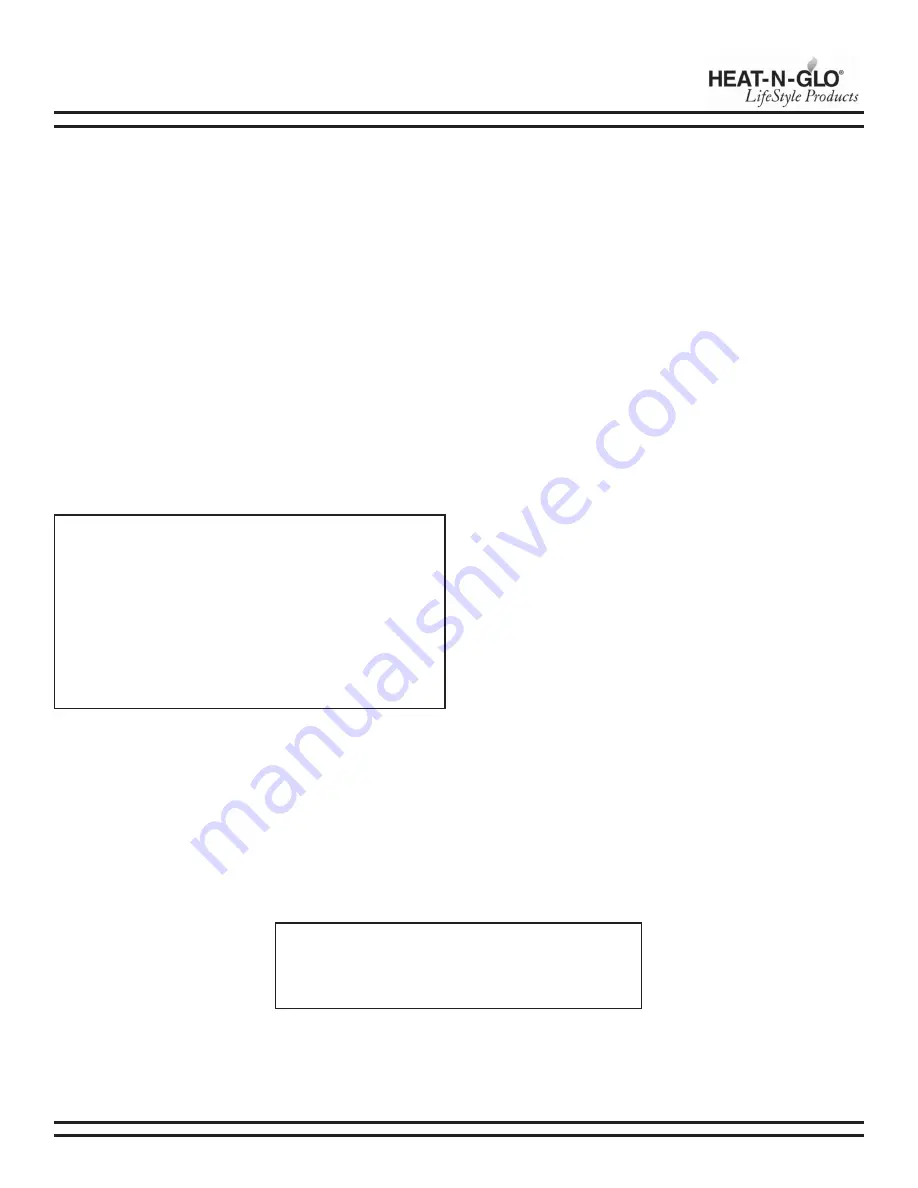
08/04
4004-001 Rev C
3
PATIO CAMPFIRE INSTALLATION INSTRUCTIONS
B. SAFETY INFORMATION
The Patio Campfire has been tested in accordance with
IAS US
requirements for Outdoor Gas Fireplaces, Draft 4-96
and
ANSI
Z21.58-1995/CGA 1.6-M96
for Canada and has been listed by
Underwriters Laboratory (UL) for installation and operation as
described in these installation and operating instructions.
The installation must conform with local codes or, in the absence
of local codes, with the
National Fuel Gas Code ANSI Z223.1 or
CAN/CGA-B149.1, National Gas Installation Code
or
CAN/CGA-
B149.2, Propane Installation Code
.
IMPORTANT:
Installation of natural gas should be done by a
qualified installer, service agency or gas supplier.
The appliance and its manual shutoff valve must be disconnected
from the gas supply piping system during any pressure testing
of the system at test pressures in excess of 1/2 psig (3.5kPa).
This appliance must be isolated from the gas supply piping
system by closing its manual shutoff valve during any pressure
testing of the gas supply piping system at test pressures equal
to or less than 1/2 psig (3.5kPa).
•
Children and adults should be alerted to the hazards of high
surface temperatures and should stay away to avoid burns
or clothing ignition.
•
Young children should be carefully supervised when they
are in the area of the appliance.
•
Never leave the appliance unattended during operation.
Note:
All new LP cylinders (and in many cases used cylinders)
may contain water, air or other contaminants. It is essential
that these substances be released before filling the cylinder
and placing into service. Water vapor present in the gas vapor
may cause the regulator to “freeze up” and cause an
interruption to the gas flow. This interruption will cause the
appliance to shut down. To prevent this from occurring, it is
essential that a qualified individual always purge a new tank
thoroughly before placing it into service. It is recommended
that cylinders that have not been used for extended periods of
time also be purged before use.
•
Clothing or other flammable materials should not be placed
on or near the appliance.
•
Any guard or other protective device removed for servicing
the appliance must be replaced prior to operating the
appliance.
•
Installation and repair should be done by a qualified service
person. The appliance should be inspected before use and
at least annually by a qualified service person. More frequent
cleaning may be required as necessary. It is imperative that
the control compartment, burners and circulating air
passageways of the appliance be kept clean.
•
Inspect the fuel supply connection (including the hose for
LP models) before each use of the appliance.
•
If it is evident there is excessive abrasion or wear, or the
hose is cut, it must be replaced prior to the appliance being
put into operation.
•
The pressure regulator and hose assembly supplied with
LP models must be used. Replacement pressure regulators
and hose assemblies must be those specified in this
manual
•
The LP gas supply cylinder used with LP models must be
constructed and marked in accordance with the
specifications for LP gas cylinders of the U.S. Department of
Transportation (DOT).
•
Cylinders must be stored outdoors in a well ventilated area
out of the reach of children. Disconnected cylinders must
have threaded valve plugs tightly installed and must not be
stored in a building, garage or any other enclosed area.
•
Storage of this appliance indoors is permissible only if it
has been disconnected from its fuel supply (natural gas line
or LP gas cylinder).
•
The LP gas cylinder supply system must be arranged for
vapor withdrawal.
•
The LP gas cylinder used must include a collar to protect the
cylinder valve.
•
When an LP model is not in use, the LP gas must be turned
off at the supply cylinder.
Note:
Do not use this appliance if any part has been under
water. Immediately call a qualified service technician to
inspect the appliance and to replace any part of the control
system and any gas control which has been under water.






























